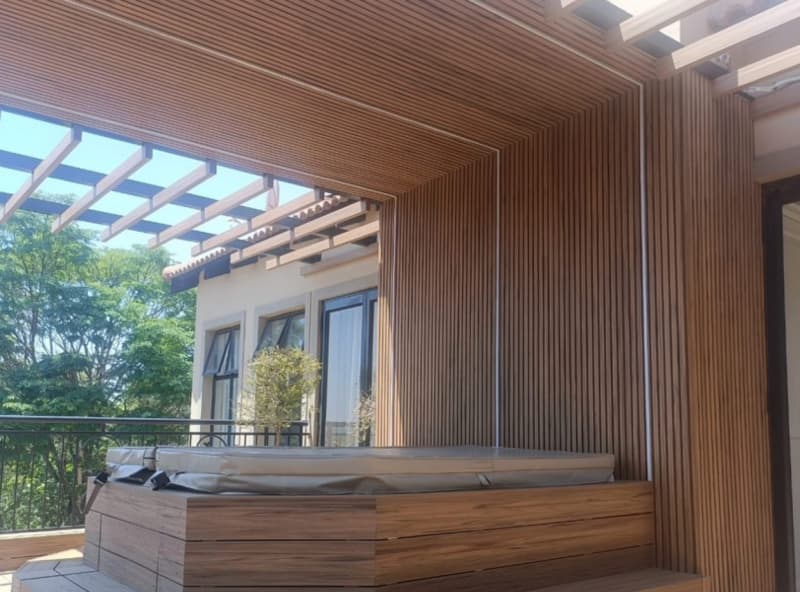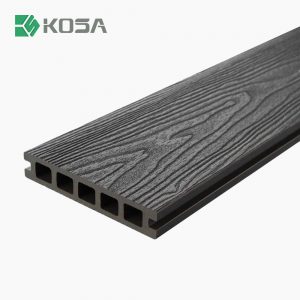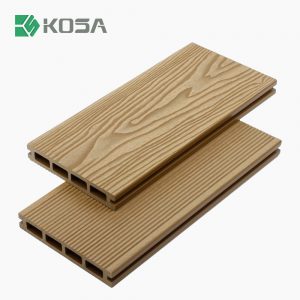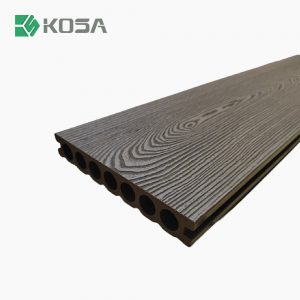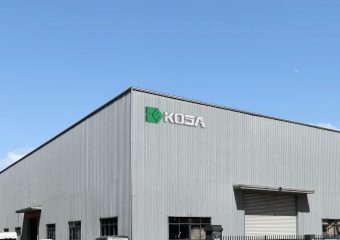In the ever-evolving world of architecture and design, innovative materials and techniques continue to redefine the aesthetic and functional possibilities of buildings. One such advancement is the emergence of slatted composite wall cladding, a material that combines style, durability, and performance to create visually stunning and highly functional facades.
What is Slatted Composite Wall Cladding?
Slatted composite wall cladding refers to a system of elongated, narrow panels or slats made from a composite material that is attached to the exterior walls of a building. The composite material typically consists of a combination of fibers, resins, and additives, which are engineered to provide specific properties such as strength, weather resistance, and fire resistance.
The slatted design creates a distinctive visual effect, allowing for controlled light and air penetration while adding texture and depth to the building’s surface. The spacing between the slats can be adjusted to achieve different levels of privacy, shading, and ventilation.
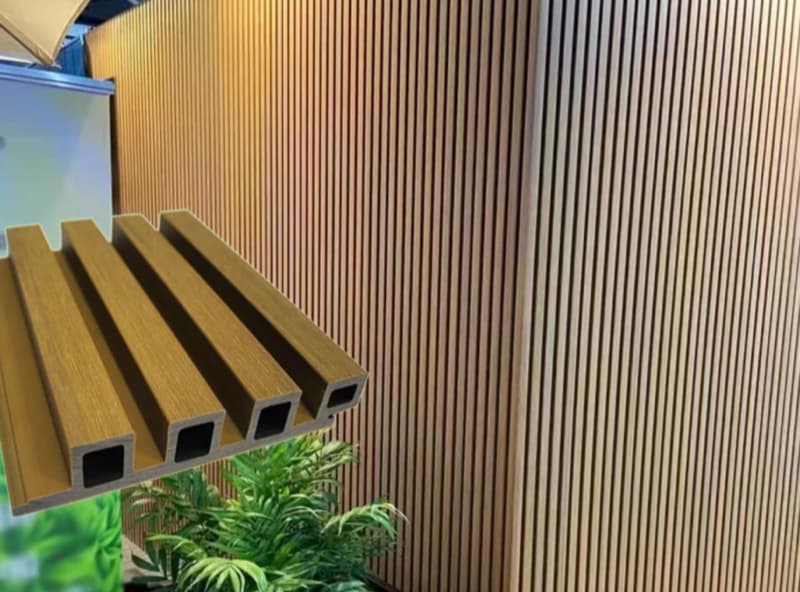
Advantages of Slatted Composite Wall Cladding
1. Aesthetic Appeal
The slatted pattern of the cladding offers a contemporary and sleek look that can transform the appearance of any building. It adds a sense of rhythm and movement to the facade, creating an interesting play of light and shadow throughout the day. The wide range of available colors, finishes, and textures allows for customization to match the architectural style and surrounding environment.
For instance, a building with a modern minimalist design might opt for smooth, monochromatic slats in a neutral color to create a clean and understated look. On the other hand, a more eclectic or industrial-style building could choose textured slats in bold colors for a bold and statement-making facade.
2. Durability and Weather Resistance
Composite materials are known for their durability and ability to withstand harsh weather conditions. Slatted composite wall cladding is resistant to moisture, UV radiation, temperature fluctuations, and corrosion, ensuring long-term performance and minimal maintenance. This makes it suitable for a wide range of climates and locations, from coastal areas prone to salt spray to regions with extreme temperature variations.
In areas with heavy rainfall or high humidity, the cladding’s water-resistant properties prevent water infiltration and the subsequent damage that can occur to the building structure. The UV resistance ensures that the color and finish of the slats do not fade or deteriorate over time, maintaining the aesthetic appeal of the facade.
3. Thermal Insulation and Energy Efficiency
The slatted design of the cladding can contribute to improved thermal insulation of the building. By creating an air gap between the slats and the wall, it acts as a buffer zone that helps regulate the temperature inside. This can reduce the reliance on heating and cooling systems, resulting in energy savings and lower operating costs.
During hot summer months, the air gap allows for natural ventilation and heat dissipation, keeping the interior cooler. In colder climates, the insulation provided by the cladding helps retain heat, reducing heat loss and improving energy efficiency.
4.Fire Resistance
Safety is a crucial consideration in any building, and slatted composite wall cladding often incorporates fire-retardant properties. This enhances the fire resistance of the building envelope, providing an added layer of protection for occupants and reducing the risk of fire spread.
Buildings with high occupant densities or in areas with strict fire safety regulations can benefit from the use of fire-resistant cladding materials to meet safety standards and ensure the well-being of those inside.
5. Sound Insulation
The slatted structure of the cladding can also provide some level of sound insulation. By reducing the transmission of external noise, it creates a more peaceful and comfortable indoor environment. This is particularly beneficial for buildings located in noisy urban areas or near busy transportation routes.
For example, offices or residential buildings near highways or airports can experience a significant reduction in noise pollution with the installation of sound-insulating slatted composite wall cladding.
Applications of Slatted Composite Wall Cladding
1. Residential Buildings
Slatted composite wall cladding is increasingly being used in residential construction to enhance the curb appeal and functionality of homes. It can be applied to single-family houses, townhouses, and apartment buildings, adding a modern touch and providing protection from the elements.
In a suburban setting, a home with slatted cladding in a natural wood finish can blend seamlessly with the surrounding landscape, while a high-rise apartment building in the city might feature sleek, metallic slats for a contemporary urban look.
2. Commercial and Industrial Buildings
The durability and aesthetic flexibility of slatted composite wall cladding make it a popular choice for commercial and industrial facilities. Office buildings, retail stores, warehouses, and factories can benefit from its modern appearance and functional properties.
Office complexes can create a professional and inviting facade with slatted cladding in corporate colors, while factories can use it for both aesthetic purposes and to improve ventilation and light penetration in the workspace.
3. Public Buildings and Infrastructure
Slatted composite wall cladding is also finding applications in public buildings such as schools, hospitals, libraries, and transportation hubs. Its durability and low maintenance requirements make it suitable for high-traffic areas, while its design options can contribute to creating inviting and functional spaces for the public.
A school building might incorporate colorful slatted cladding to create a cheerful and stimulating environment for students, and a train station could use it to add a modern and distinctive look while providing protection from the weather.
An Actual Case of Slatted Composite Wall Cladding
One notable example of the successful application of slatted composite wall cladding is the [Name of Building] in [Location]. This modern office building features a facade clad with slatted composite panels in a sleek gray finish. The slats are spaced strategically to allow for optimal natural light to enter the interior while providing shade and privacy. The cladding not only gives the building a contemporary and sophisticated look but also helps to regulate the internal temperature, reducing the need for excessive air conditioning. Additionally, the durability of the material has withstood the local weather conditions, maintaining its appearance and performance over time.
Installation and Maintenance
The installation of slatted composite wall cladding typically requires professional expertise and the use of appropriate mounting systems. The slats are attached to the building’s structural framework using clips, screws, or adhesives, ensuring a secure and seamless fit.
Proper installation is crucial to ensure the performance and longevity of the cladding. It is important to follow the manufacturer’s instructions and local building codes to achieve a successful installation.
Maintenance of slatted composite wall cladding is relatively straightforward. Regular cleaning with mild soap and water is usually sufficient to remove dirt and debris. Inspections should be conducted periodically to check for any signs of damage, such as loose slats or fading of the finish. Minor repairs can be easily carried out, and in cases of significant damage, replacement of individual slats is possible without having to replace the entire cladding system.
Slatted composite wall cladding represents a significant advancement in architectural design and building materials. Its combination of aesthetic appeal, durability, energy efficiency, and functionality makes it a preferred choice for a wide range of applications. As the demand for sustainable and visually striking buildings continues to grow, this innovative cladding solution is likely to play an increasingly important role in shaping the future of the built environment. Whether in residential, commercial, or public projects, slatted composite wall cladding offers architects and builders the opportunity to create unique and inspiring structures that stand the test of time.
